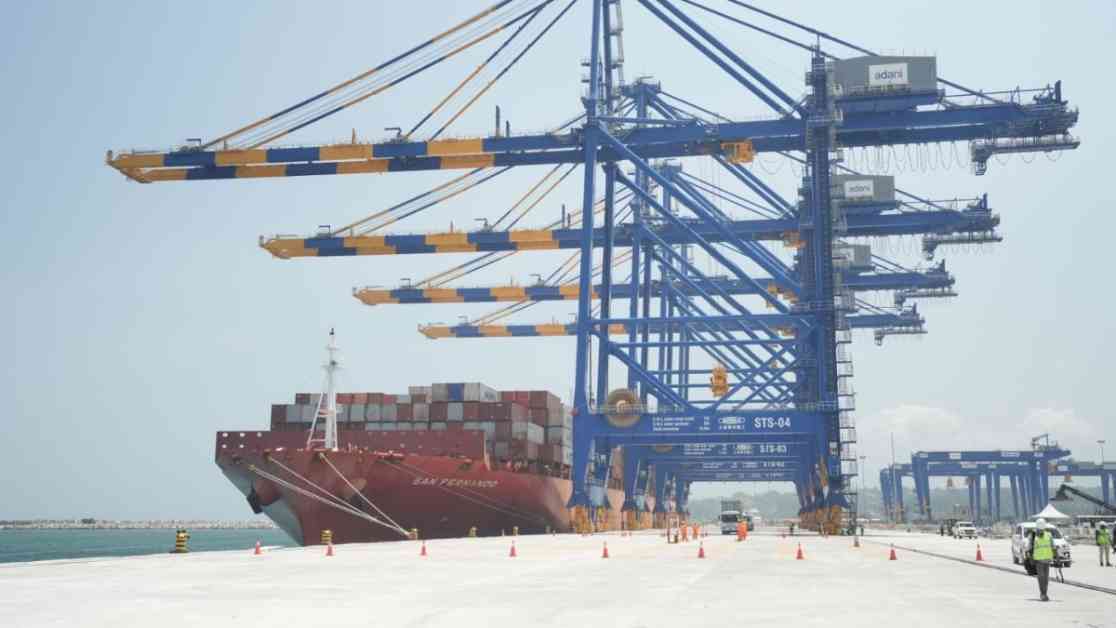India Aims for Maritime Excellence: Ambitious Goals Set for 2025
In a bold move to revolutionize India’s maritime sector, the Ministry of Ports, Shipping & Waterways (MoPSW) has unveiled plans to complete 150 crucial maritime projects by September 2025. This strategic initiative, announced during the ‘Chintan Shivir 2025’ in Srinagar, signifies a significant step towards propelling India into the forefront of the global shipping and waterways arena.
Union Minister Sarbananda Sonowal spearheaded the event, shedding light on ongoing projects valued at a staggering ₹2 lakh crore. With a keen eye on the future, Sonowal also outlined innovative endeavors designed to elevate port infrastructure, shipbuilding capabilities, and sustainable shipping practices across the nation.
India’s Aspirations in Shipbuilding: A Path to Prominence
A pivotal highlight of the discussions revolved around India’s ambitious goal to secure a position among the top five shipbuilding nations by 2047. To achieve this monumental feat, the government aims to ramp up the country’s shipbuilding capacity by an impressive four million gross registered tonnage (GRT). This endeavor will be supported by the implementation of new policies, robust skill development programs, and strategic collaborations with state governments to fortify the shipbuilding ecosystem.
Furthermore, a groundbreaking initiative was announced with the establishment of the Bharat Container Shipping Line under the aegis of the Shipping Corporation of India. This strategic move aims to diminish India’s reliance on foreign shipping entities, fostering self-sufficiency and bolstering the nation’s maritime prowess. Additionally, the inception of a Coastal Green Shipping Corridor along the Kandla-Tuticorin route heralds a new era of eco-friendly maritime transportation in India, setting a precedent for sustainable practices in the industry.
In a bid to promote environmental sustainability, all major ports have been tasked with incorporating at least one Green Tug within the next three months, as part of the Harbour Craft Green Transition Program. This initiative seeks to encourage the adoption of cleaner energy sources and reduce the carbon footprint of port operations, aligning with global efforts to combat climate change.
Inland Waterways Development: Navigating New Horizons
The spotlight also shone on inland waterway development, with the Inland Waterways Authority of India (IWAI) committing ₹100 crores towards infrastructure enhancements on three national waterways in Jammu & Kashmir — Chenab (NW-26), Jhelum (NW-49), and Ravi (NW-84). This investment aims to enhance cargo movement efficiency and stimulate river tourism in the picturesque region, unlocking a wealth of economic opportunities and cultural exchanges.
Efficiency and competitiveness in port operations took center stage, with the imminent establishment of India Ports Services Limited (IPSL) poised to revolutionize services at major ports, enhancing their global standing. Anticipated to commence operations by April 2025, the Mumbai International Cruise Terminal is set to bolster India’s burgeoning cruise tourism industry, catering to a growing demand for luxurious travel experiences. Moreover, the impending launch of the Sagarmala Digital Centre of Excellence in collaboration with C-DAC signifies a monumental leap towards digitizing the maritime landscape, ushering in a new era of technological innovation and operational efficiency.
As India charts a course towards maritime excellence, these visionary initiatives are poised to reshape the nation’s shipping and waterways sector, propelling it to new heights of success and sustainability. With a steadfast commitment to innovation, collaboration, and environmental stewardship, India is poised to emerge as a formidable force in the global maritime arena, setting sail towards a brighter, more prosperous future.























